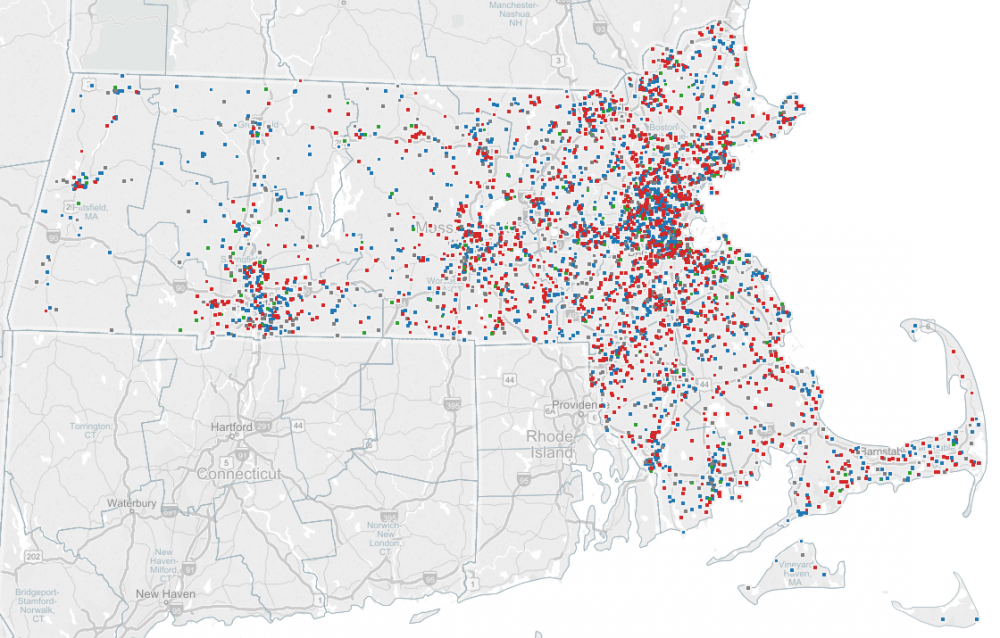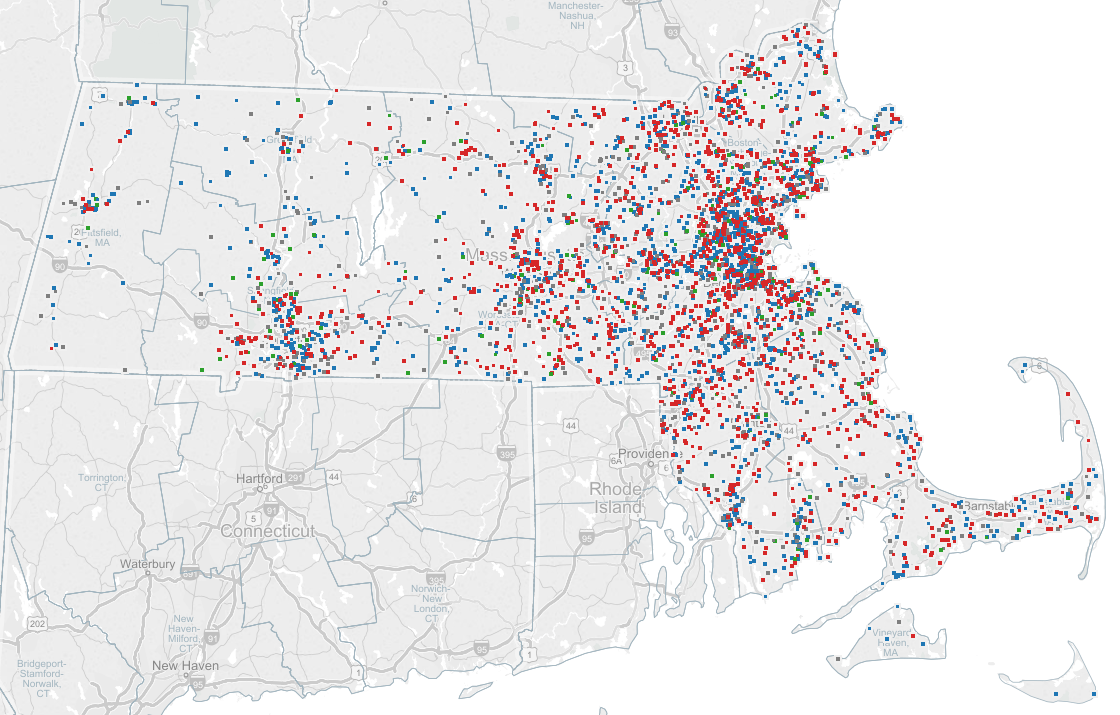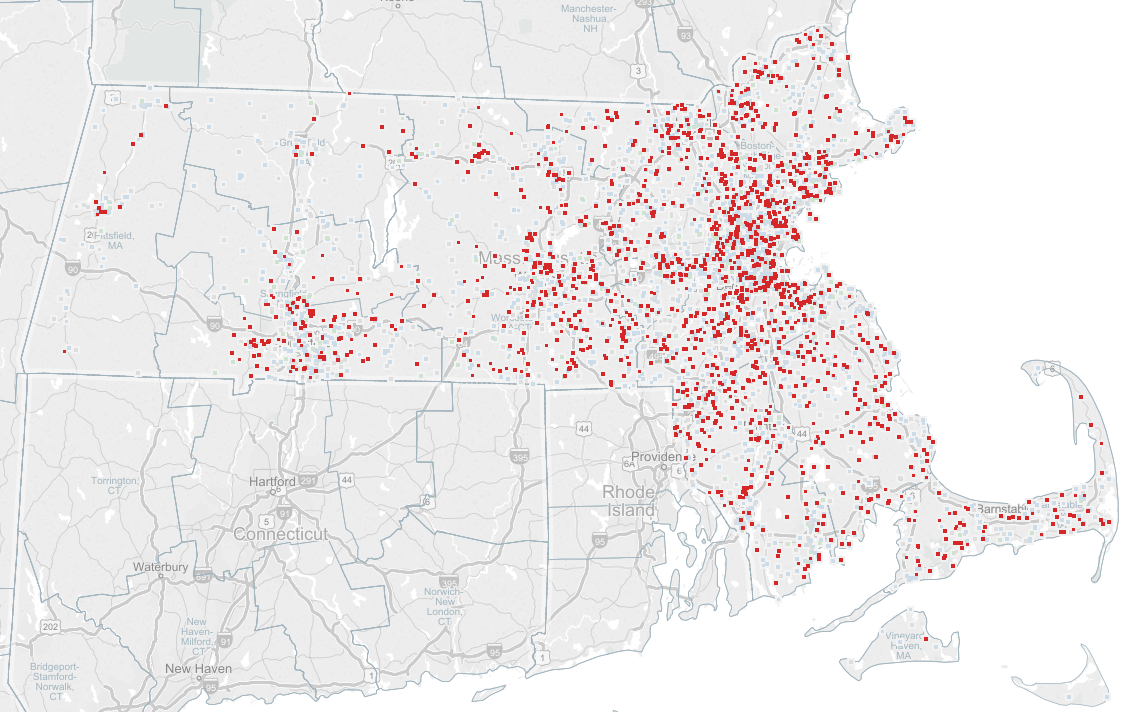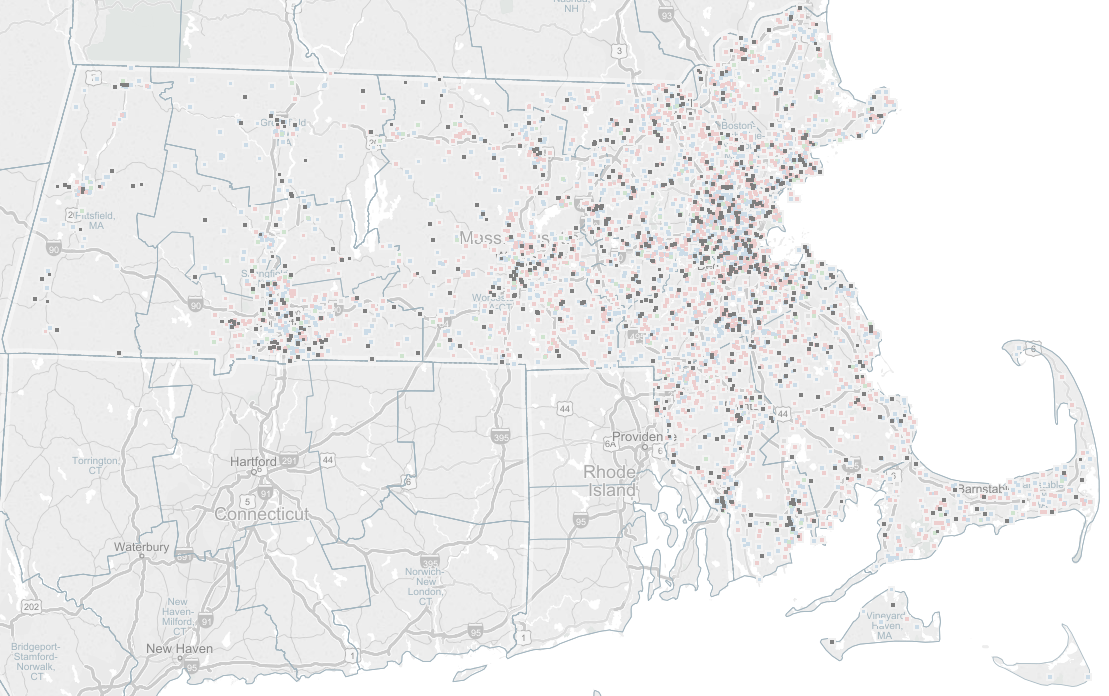Advertisement
Mapping The WBUR Poll Shows Cities To Be The Battleground

Geographic polarization has become a fact of life over the past several Massachusetts elections. Towns across the commonwealth have drifted toward the two poles of the political spectrum, sorting into tidy regions that vote strongly for one candidate or the other.
This isn’t easy to see in a single poll of 400 or 500 voters; there just aren't enough responses to represent each of the state's 351 cities and towns. But with about 4,200 responses to the WBUR Tracking Poll thus far, these geographic patterns do start to emerge. To examine this visually, we plotted each and every respondent to the WBUR Tracking Poll on a state map, geocoded using information from the state voter file. For privacy reasons, these maps are not interactive, so as to prevent zooming in on individual respondents' locations.
So far, the overall pattern is conforming to recent elections. But, as the polling trends have suggested, there is evidence that the margins within the larger regions may have shifted in Baker's favor compared with other recent elections.

Martha Coakley’s support is more concentrated in urban areas. In recent elections, in Massachusetts and elsewhere, Democrats have won by winning big in cities. The map below, with its denser clusters of blue dots in cities, illustrates the extent of this. By contrast, Coakley has relatively fewer dots in the suburbs. While many voters in the suburbs will still vote for Coakley, recent history indicates the collar of towns to the north, south and west of Boston and its inner suburbs will stay deep red.

Baker has enough votes in cities to keep it close. Coakley is still winning cities, but Baker is not conceding them. He has made a major push for the urban vote, and it seems to be paying off. In Boston and the 26 so-called “Gateway Cities,” Baker has cut Coakley's lead down to just 9 points, according to combined data from the last two WBUR polls. This is nearly identical to her margin in those cities when she lost by 5 points to Scott Brown in 2010.

There are enough undecided voters in cities to move the margin. As of this week's poll, 16 percent of urban voters remain undecided, compared to 10 percent outside of the cities. This pattern has held throughout the Tracking Poll, as the map below shows. On the one hand, these undecideds provide an opening for Coakley to boost her vote totals in these areas back to a typical range for a Democratic candidate. On the other hand, the fact that so many urban voters remain undecided is a symptom of Coakley's problem with her own base. Her support among registered Democrats has been stuck below 70 percent since late August. Unless city voters break back toward Coakley, it's hard to see how she overcomes Baker's expected advantage in suburban and rural areas.

Democrats will paint western Mass. blue again — but for very few votes. The last few elections have featured huge Democratic margins in the sparsely populated areas in the western part of the state. The region, which used to be a checkerboard of red and blue towns, is now a sea of blue washing in from the New York border. It is a 30-minute drive from the western border to reach the nearest recent Republican town of Otis, which Brown won in 2010. This year looks to be no different. But as impressive as it looks on the electoral map, all that blue out west nets Democrats very few votes. The towns that border New York, for instance, have made up only a quarter of a percent of the electorate in recent cycles.
On Election Night, we may end up with the now-familiar regionalized map: blue in the cities and out west, red in the middle and north and south of Greater Boston. The question is, how deep a blue will the cities be? If Baker succeeds in lightening them a few shades -- something the polling suggests he is doing -- it will make mapping Martha Coakley's route to the governor's office a much more difficult task.